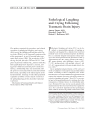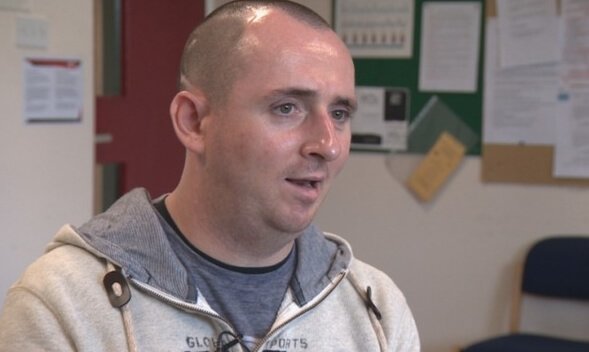

In other words, they were unable to move their facial muscles to command but they could move the same muscles involuntarily. Oppenheim observed that these patients exhibited involuntary spells of uncontrollable laughter and crying, which in physical character involved symmetrical movements of the face and lips with normal lacrimation and vocalization. Patients with pseudobulbar palsy are usually unable to close their eyes, elevate the corners of their mouth, swallow, chew, or move their tongue when they are asked to do so. In the 1880s, Hermann Oppenheim (the father of German neurology) and Ernst Siemerling described exaggerated laughing and crying in patients with pseudobulbar palsy, a disease in which lesions along the pathways to the brainstem (i.e., the bulb), rather than in the brainstem nuclei themselves (hence pseudobulbar), cause an upper motor neuron pattern of weakness in the cranial nerve muscles.

Have you checked out LRM Online’s official podcast feed yet The LRM Online Podcast Network, which includes our flagship podcast Los Fanboys, our premiere podcast Breaking Geek Radio: The Podcast, and our morning show LRMornings? Check it out by listening below.Historically, this condition was referred to as pseudobulbar affect. Don’t forget to share this post on your Facebook wall and with your Twitter followers! Just hit the buttons on the top of this page. Bravo to Phoenix, who not only lost a dramatic amount of body mass to bring this incarnation of the Clown Prince of Crime to life, but also has shined a light onto a rare medical condition I had never knew existed. It seems to me that DC actors are investing a ton into radically altering their bodies to portray characters. Check out the below video just so you can see how close Phoenix was to the real thing. Lotan, who may have one of the coolest last names I’ve ever heard, suffers from bouts of uncontrollable laughter as a side effect of having multiple sclerosis. “My neck gets really sore and I am moving my head to try to relieve strain and sometimes that cuts off air.” Also, spit builds up in your mouth and as you pull in a breath the spit goes down the wrong pipe. “The choking comes from trying to catch my breath, desperately needing to breathe. One specific aspect Phoenix nailed was the choking aspect. “At times during the film I felt as though I was looking at a reflection of myself.” I think he captured the feeling of isolation and frustration with the lack of understanding from others. You try and explain but they have preconceived notions that you are a drug addict or just a deranged lunatic. “It weighs heavy on the mind, people just look at you. “I felt as if he experienced a deep sense of rejection in the bus scene, similar to how I felt during the days of my accident. “I think he did a great job of capturing the inability to stop laughing no matter what the circumstances are,” Lotan told LADBible. RELATED – Did Jared Leto Want To Stop Joker From Being Made? The medical term for the disease is pseudobulbar.

In the 1880s, Hermann Oppenheim (the father of German neurology) and Ernst Siemerling described exaggerated laughing and crying in patients with pseudobulbar palsy, a disease in which lesions along the pathways to the brainstem (i.e., the bulb), rather than in the brainstem nuclei themselves (hence pseudobulbar), cause an. Phoenix’s take on Joker’s trademark laugh was so spot on that Scott Lotan, who suffers from this disorder in real-life, has stepped forward to praise Phoenix for his accurate take on the laugh. Historically, this condition was referred to as pseudobulbar affect. Alternately, Phoenix’s Joker laugh is based on pathological laughter, which is something that often manifests after severe trauma. Ledger’s Joker presented a laugh that was maybe a twisted take on the sort of humor he got. Whereas Nicholson’s 89 Joker began the maniacal laugh after seeing himself in the mirror for the first time, post a dunk in chemicals. In the movie, Phoenix has provided a grounded take on the origin of the Joker’s trademark laugh.
Pathological laughter movie#
One thing that people praise most in the movie is Joaquin Phoenix’s performance of Arthur Fleck, and the unique medical affliction that haunts Fleck. This study aimed to identify the occurrence of PLC in the first year after TBI and to determine whether there is a relationship between PLC and other clinical features or demographics.

It’s been out for less than a few weeks, and Joker has not only won over critics but fans, and a lot of cold hard cash. There are limited data regarding the incidence of pathological laughter and crying (PLC) after traumatic brain injury (TBI).


 0 kommentar(er)
0 kommentar(er)
